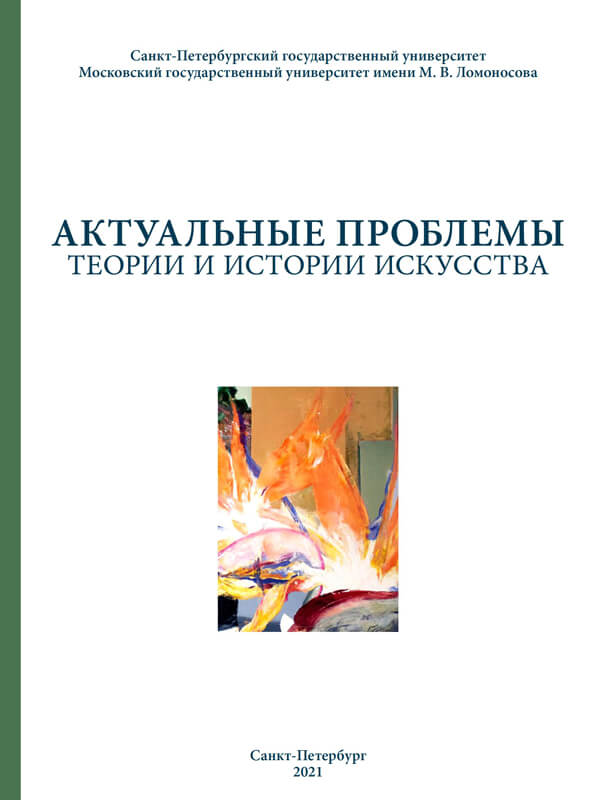“Self-Sufficient” Column in the Art of the Northern Renaissance: Negative and Positive Connotations of the Image
DOI:
https://doi.org/10.18688/aa2111-06-54Keywords:
order, iconology, column, Northern Renaissance, 16th –17th centuries, Germany, Netherlands, Eric Forssman, Piscator’s BibleAbstract
The article examines the giving of a special meaning to a separate column as the issue of iconology of the architectural order. It focuses on the monuments of the Netherlands and Germany of the 16th — first half of the 17th centuries: engravings, elements of facade architectural decor and church interior, etc. E. Forssman’s dissertation “Säule und ornament. Studien zum Problem des Manierismus in der nordischen Säulenbüchern und Vorlagenblättern des 16. und 17. Jahrhunderts”, published in Stockholm in 1956, has been taken as the basis for the study. For the first time the scientist drew attention to the specific traits of the reception of architectural order by the masters of the Northern Renaissance, for whom the “meaning-endowing” of the support prevailed over its tectonic functions, analyzing at the same time some cases of using the image of the column within the framework of religious themes.
The study considers the cases of “self-sufficiency” of the column noted by the Swedish researcher in more detail, supplements them with examples from the field of engraving and architectural practice of the period under consideration, identifies other precedents of such “meaning-endowing” of the column (including precedents of positive connotations), structures and systematizes the available information, including the appearance of these subjects in Russian art of the 18th century, when the latter begins to show a noticeable interest in Western European models.
This study is based on the research, supported by the Program of Fundamental Research of the Russian Academy of Architecture and Construction Sciences and of the Ministry of Construction, Housing and Utilities of the Russian Federation — 2021.
References
Callisen S.A. The Iconography of the Cock on the Column. The Art Bulletin, 1939, no. 21, pp. 160–178.
Forssman E. Säule und ornament. Studien zum Problem des Manierismus in der nordischen Säulenbüchern und Vorlagenblättern des 16. und 17. Jahrhunderts. Stockholm, Almquist & Wiksell Publ., 1956. 300 p. (in German).
Graevenitz A. M. von. Das niederländische Ohrmuschel-Ornament. Phänomen und Entwicklung dargestellt an den Werken und Entwürfe der Goldschmiederfamilien van Vianen und Lutma. Bamberg, Bamberger Fotodruck Rudolf Rodenbusch Publ., 1973. 354 p. (in German).
Grapheus C. S. De seer wonderlijcke, schoone, Triumphelijcke Jncompst, van den hooghmogenden Prince Philips, Prince van Spaignen, Caroli des vijfden, Keysers sone, in de stadt van Antwerpen Anno M.CCCCCXLIX. Antwerpen, 1550.
Iur’ev V. (transl.) Tolkovanie na Apokalipsis sviatogo Apostola i Evangelista Ioanna Bogoslova. Sviatitel’ Andrey arkhiepiskop Kesarii Kappadokiiskoi (Commentary on the Book of Revelation. Andreas of Caesarea). Moscow, Sibirskaia Blagozvonnitsa Publ., 2016. 347 p. (in Russian).
Karpova T. L. (ed.). Bibliia Piskatora — nastol’naia kniga russkikh ikonopistsev: katalog vystavki (Piscator’s Bible — The Desk Book For Russian Icon Painters: Exhibition Catalogue). Moscow, Moskva Publ., 2019. 232 p. (in Russian).
Karpova T. L. (ed.). Theatrum Biblicum. Bibliia Piskatora 1643 goda is sobraniia Gosudarstvennoi Tret’iakovskoi galerei (Piscator’s Bibile of 1643 from the Сollection of the State Tretyakov Gallery). Moscow, Moskva Publ., 2020. 524 p. (in Russian).
Kavaler E. M. Micro-architecture as the Paradigm of Antique Architecture in the Low Countries: 1515–1540. Microarchitectures médiévales: L’échelle à l’épreuve de la matière. Paris, Éditions de l’Institut national d’histoire de l’art and Éditions Picard Publ., 2018, pp. 143–152.
Kavaler E. M. Ornament and Systems of Ordering in the Sixteenth-Century Netherlands. Renaissance Quarterly, 2019, no. 72, pp. 1269–1325.
Kovbasiuk S. The Last Supper as a Convivium: The Ways of the Desacralization of Christian Images in Netherlandish Art of the First Half of the 16th Century. Actual Problems of Theory and History of Art: Collection of Articles, 2016, vol. 6, pp. 415–424 (in Russian). DOI: 10.18688/aa166-5-43
Larionov A. O. (ed.) Ot gotiky k man’erizmu: niderlandskie risunki XV–XVI vekov v sobranii Gosudarstvennogo Ermitazha (From Gothic to Mannerism: Netherlandish Drawings in the Collection of The State Hermitage: Exhibition Catalogue). St. Petersburg, The State Hermitage Museum Publ., 2010. 364 p. (in Russian).
Petcu E. J. Anthropomorphizing the Orders: “Terms” of Architectural Eloquence in the Northern Renaissance. The Anthropomorphic Lens. Anthropomorphism, Microcosmism and Analogy in Early Modern Thought and Visual Arts. Leiden, Boston, Brill Publ., 2015, pp. 341–378.
Preobrazhenskij A. Western Motifs and Forms in Post-Byzantine Painting of Muscovy; Preliminary Thoughts. Actual Problems of Theory and History of Art: Collection of Articles, 2016, vol. 6, pp. 252–266 (in Russian). DOI: 10.18688/aa166-3-26
Roch-Lemmer I. Neue Forschungen zum Dessauer Abendmahlsbild von Lucas Cranach d.J. (1565). Lucas Cranach: 1553–2003; Wittenberger Tagungsbeiträge anlässlich des 450. Todesjahres Lucas Cranachs des Älteren. Leipzig, 2007, pp. 313–325 (in German).
Rykwert J. The Dancing Column: On Order in Architecture. Cambridge, MA; London, MIT Press Publ., 1996. 598 p.
Vries H. V. de. Theatrum Vitae Humanae. Aeneis Tabulis per Ioan. Phrys. Exaratum. Antwerpen, 1577.


